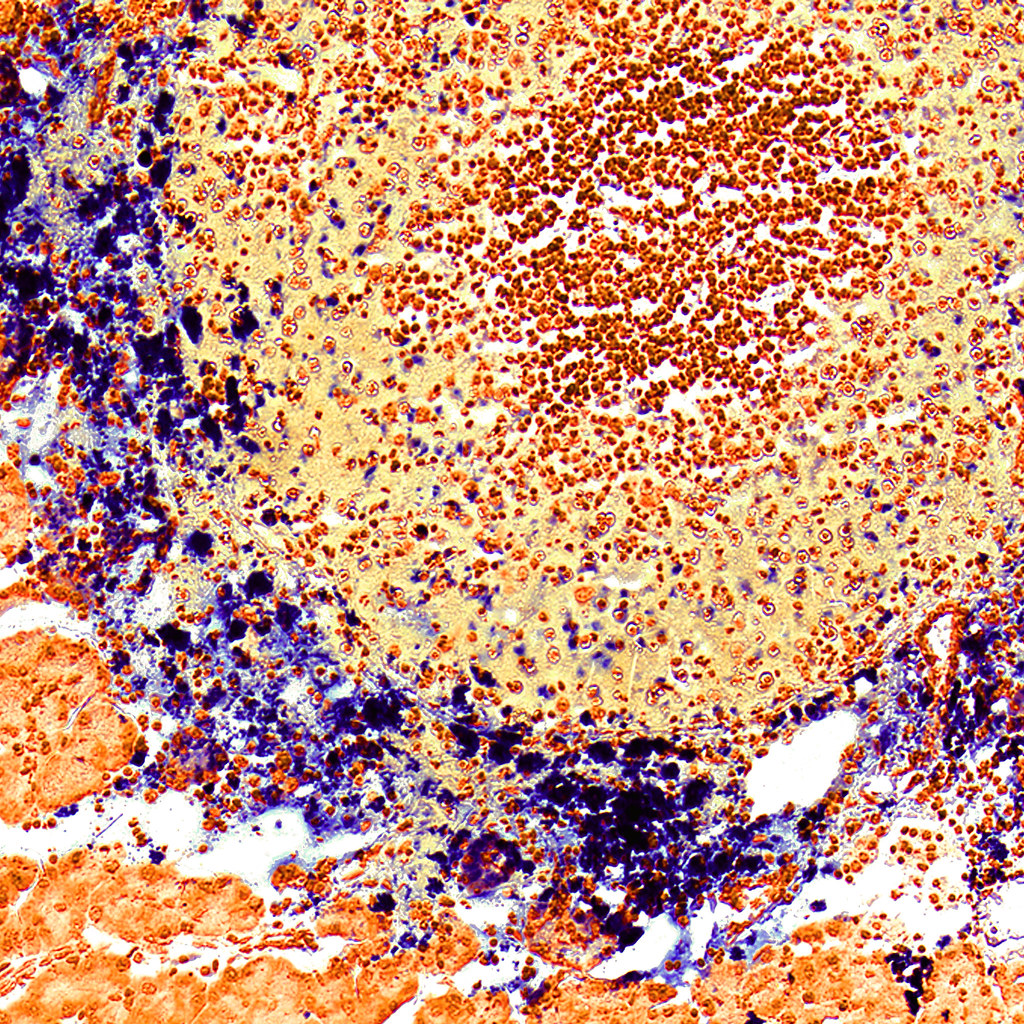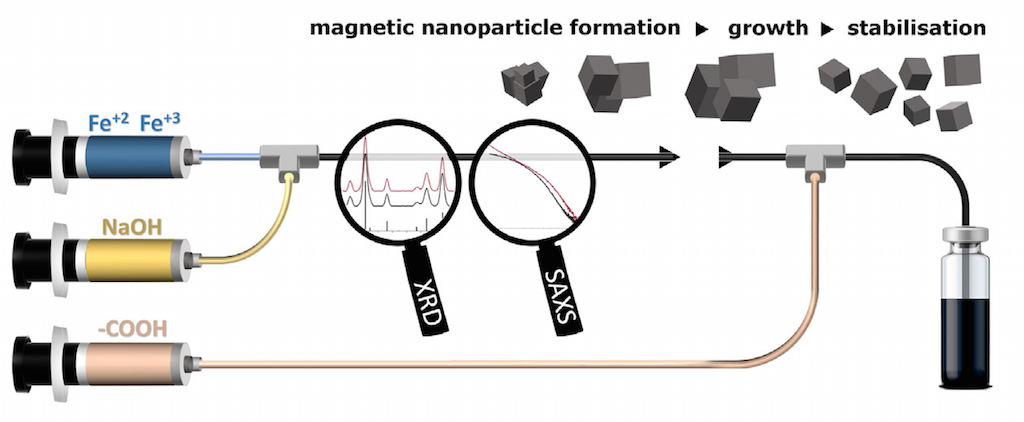Press Release: Improved nanoparticles towards more effective drug formulation, delivery and cancer treatment
A recent study conducted in the frame of the Nano-analytics for Pharmaceutics project led by Aden Hodzic (CERIC-ERIC) and in cooperation with UCL scientists Maximilian Besenhard, Nguyen Thi Kim Thanh, and Asterios Gavriilidis, shed light on new methods for the synthesis of iron oxide nanoparticles. Findings will help improve future drug formulation and delivery for more effective cancer diagnosis and treatment.

M.D., Ph.D., and Hui Mao, Ph.D., National Cancer Institute,
National Institutes of Health)
Magnetic iron oxide nanoparticles (IONPs) have emerged as one of the primary nanomaterials in biomedicine, thanks to their low toxicity and biodegradability. Their morphological features allow their use in drug delivery systems for tumour cells imaging or burning, as well as for delivery of therapeutic agents. For example, they can be used as contrasting agents for magnetic resonance imaging (MRI), which is widely deployed in clinical oncology diagnostics.
However, iron oxide nanoparticles are unstable from a physical-chemical point of view. This is due to the fact that they tend to agglomerate and oxidize, increasing the risk of toxicity for the body, and of side effects if used in the clinical field. Their use for clinical and medical purposes therefore implies an in-depth investigation of all the phases necessary for their synthesis, for a more complete understanding of the mechanisms that drive their formation.
The synthesis of nanoparticles is challenging, due to the high speed in which they form (a few seconds), which reduces the time needed to analyse their characteristics. The approach adopted by the researchers has overcome this limitation through the use of a new application method of a continuous flow reactor, for the observation of the single states of the reaction in real time. This allowed us to analyse the nanoparticles in their transient reaction states, as if they were “frozen” in single frames. This method allowed, for the first time, to study the first phases of formation of the solid particles obtained from a liquid solution (i.e., the so-called, co-precipitation). The addition of citric acid to the first precipitates of particles has also shown its effectiveness in giving them greater stability.

Thanks to the information obtained with X-ray diffraction and Small-Angle X-ray diffraction techniques, on the formation and stabilisation of nanoparticles, it has been possible to continuously synthesise stable iron oxide nanoparticles, which demonstrates the efficiency of the innovative synthetic procedure used.
“One of the added value of the ‘Nano-analytics for Pharmaceutics’ project is the use of multiple complementary advanced techniques to solve complex problems towards more efficient cancer diagnosis and treatment” – states Hodzic. In this respect, the methods using high resolution synchrotron light and laboratory techniques provided by CERIC-ERIC allowed having a closer look to nanoparticles structure and to the intermediate stages of their synthesis.
The research involved scientists from CERIC-ERIC and its partners – the Graz University of Technology and Elettra Sincrotrone Trieste – and from the University College London.
Regarding future plans, Hodzic said: “In the next steps, we plan to build and study magneto-liposomes as a new kind of Nano-drug delivery system”.
The study is published in the Chemical Engineering Journal.
ORIGINAL ARTICLE: https://doi.org/10.1016/j.cej.2020.125740
PRESS KIT: https://drive.ceric-eric.eu/d/ba56111dd0514ec5a80b/
CONTACTS: CERIC Press Office: press@ceric-eric.eu | Nicoletta Carboni, nicoletta.carboni@ceric-eric.eu | +39 338 17 61 632 – +39 346 5434 361
-
30.06.2025
CERIC Newsletter | June 2025
-
30.06.2025
The CERIC 2024 Report is online



